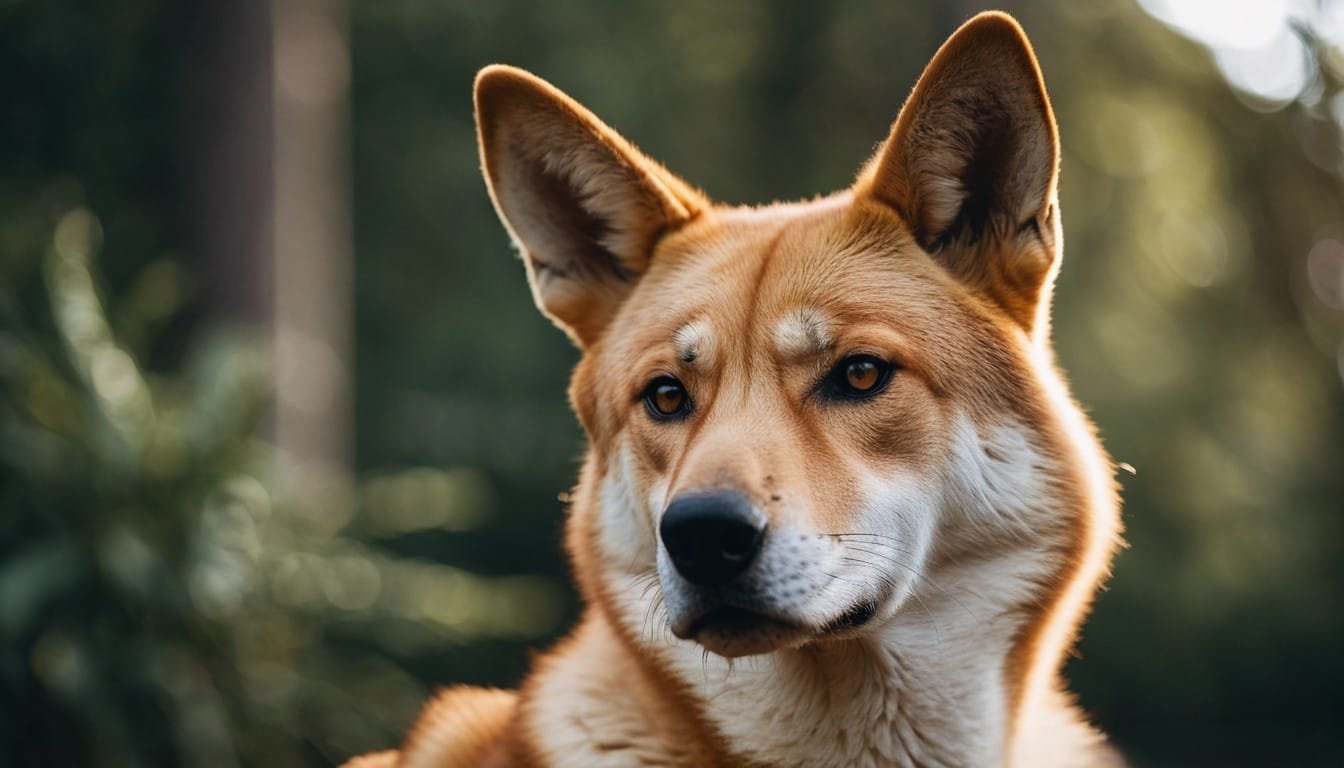Introduction
Wombats, though resilient, face several predators in the wild. From dingoes to Tasmanian devils, these marsupials must rely on their burrows and unique defenses to survive. Dingoes are their primary threat, often preying on young or weaker individuals
In Tasmania, Tasmanian devils target juveniles, while large birds of prey occasionally pose a risk. Feral dogs also contribute to predation, particularly in areas near human settlements
This article explores the predators that hunt wombats, their defense mechanisms, and the indirect effects of human activity on wombat survival
Through these insights, we gain a deeper appreciation for the challenges these iconic Australian marsupials face and the strategies they use to endure in the wild
Wombat Predators in the Wild
Wombats, with their stocky build and burrowing habits, are relatively well-protected from predators. However, they are not immune to threats, especially when young or vulnerable
Their primary predators include dingoes, Tasmanian devils, and feral dogs. Additionally, large birds of prey and human activity indirectly increase predation risks. Understanding these threats sheds light on wombat survival strategies and the challenges they face in the wild
Dingoes: The Primary Threat
Dingoes are the most significant natural predators of wombats. Agile and resourceful hunters, dingoes often target wombats that are young, sick, or far from their burrows
A dingo’s hunting technique involves persistence and teamwork, which can overcome a wombat’s defensive strategies. While adult wombats are difficult to overpower due to their size and strength, dingoes may use their sharp teeth and cunning behavior to deliver targeted attacks, particularly around the neck or head
Studies, such as those by Lunney et al. (1996), indicate that dingo predation can significantly impact wombat populations in regions where burrows are sparse or habitat conditions are degraded
However, wombats often retreat into their burrows when threatened, where they use their thick-skinned rumps to block entrances, frustrating predators
Tasmanian Devils and Wombats
In Tasmania, the Tasmanian devil is another predator that poses a threat to wombats. These carnivorous marsupials are opportunistic hunters and scavengers, often preying on juvenile or weakened wombats
While they are less likely than dingoes to pursue healthy adult wombats, Tasmanian devils can take advantage of wombats that are injured or unable to escape
Tasmanian devils have powerful jaws capable of crushing bones, allowing them to consume nearly all parts of their prey. This makes them particularly dangerous to wombats that are unable to retreat into their burrows
Conservation efforts to protect both wombats and Tasmanian devils highlight the delicate balance of ecosystems where these species coexist
Birds of Prey Targeting Young Wombats
Large birds of prey, such as wedge-tailed eagles, occasionally target young wombats. These raptors are more likely to hunt joeys or smaller wombats that have ventured out of the safety of their burrows
While not a primary threat, predation by birds can affect juvenile survival rates, particularly in open areas where wombats are exposed
The risk of predation from birds underscores the importance of burrow systems in protecting young wombats. Mothers often keep their joeys close to the burrow entrances until they are large enough to defend themselves or escape from aerial predators
Feral Dogs and Their Impact
Feral dogs, a byproduct of human activity, are an increasing threat to wombats. These non-native predators often behave like dingoes but are more prevalent near human settlements
Unlike dingoes, feral dogs may kill wombats indiscriminately, sometimes targeting them even when they are not a food source
The presence of feral dogs is especially dangerous in regions where wombat populations are already under stress from habitat loss or disease. Conservationists have noted that controlling feral dog populations is critical to reducing the predation pressure on wombats and other native wildlife
Wombats’ resilience is tested daily by these predators, but their ability to adapt and defend themselves ensures their continued survival. Each predator poses unique challenges, making the wombat’s defensive behaviors and burrowing habits essential for its survival
Wombat Defense Mechanisms
Wombats are not without their defenses. Their unique adaptations allow them to evade or deter predators effectively, ensuring their survival in the wild
From burrowing deep into the ground to using their tough physical attributes, wombats employ a variety of strategies to protect themselves against threats
How Burrows Protect Wombats
Burrows are the wombat’s primary line of defense. These extensive underground tunnels provide a safe refuge from predators such as dingoes and Tasmanian devils. A wombat’s burrow can stretch up to 30 feet in length and feature multiple entrances, enabling quick escapes
When pursued, a wombat instinctively retreats into its burrow, where it can remain safe from larger predators unable to fit inside. Burrows are not only shelters from immediate danger but also protect wombats from harsh weather conditions, such as the intense heat of Australian summers
The architecture of these burrows is highly effective at limiting predator access. Predators like dingoes often become frustrated when their prey vanishes into a labyrinth of tunnels, making it nearly impossible to reach the wombat without expending significant energy
The Role of Thick Skin in Defense
One of the wombat’s most remarkable adaptations is its thick, tough rump
Made of cartilage and dense skin, this area acts as an armored shield against predators. When chased, a wombat blocks the burrow entrance with its rump, making it nearly impervious to bites or clawing attempts from predators
Dingoes and Tasmanian devils may attempt to pull the wombat out of its burrow, but the rump’s tough surface resists injuries. In some cases, wombats have been observed using their powerful hind legs to kick attackers, inflicting serious injuries
This feature is particularly effective in deterring predators, who often abandon the hunt after failing to breach the wombat’s defenses
Nocturnal Habits as a Survival Strategy
Wombats are primarily nocturnal, a behavior that reduces their exposure to predators during daylight hours. Most of their natural predators, such as birds of prey, are diurnal hunters, making nighttime activity a key survival strategy
At night, wombats emerge from their burrows to forage for food, relying on their excellent sense of smell and hearing to detect threats. Their low-light activity patterns minimize encounters with predators and allow them to take advantage of cooler temperatures
By remaining underground during the day, wombats avoid predators like dingoes that may patrol open areas in search of prey. This behavior also conserves energy, as wombats are less active when temperatures are high, aligning their lifestyle with the challenges of their environment
Why Wombats Block Burrow Entrances
One of the most intriguing defense mechanisms of wombats is their behavior of blocking burrow entrances
When threatened, a wombat positions itself in a way that completely seals off the tunnel with its rump. This unique adaptation prevents predators from reaching them, as most cannot bypass the barrier or fit into the narrow space
Wombats have even been observed using their bodies as battering rams against predators attempting to enter the burrow. By thrusting upward with their hindquarters, they can crush or injure attackers, effectively driving them away
This defensive behavior, combined with their tough skin, makes them formidable opponents despite their otherwise docile appearance
Wombats’ ability to combine physical adaptations with strategic behaviors highlights their evolutionary success. These defense mechanisms not only protect them from immediate threats but also ensure their long-term survival in the wild
Human Influence on Wombat Predation
While wombats have evolved to defend themselves against natural predators, human activity introduces new and significant challenges
Habitat destruction, road collisions, and the spread of invasive species have altered the balance of predator-prey dynamics, making wombats more vulnerable in the wild
Habitat Destruction and Increased Risks
One of the most profound ways humans influence wombat survival is through habitat destruction. Land clearing for agriculture, urban development, and mining reduces the availability of suitable environments for wombats to build their burrows
With fewer burrowing options, wombats are forced to live in more exposed areas, increasing their risk of predation
Habitat fragmentation also disrupts the ecological balance by bringing predators like feral dogs into closer contact with wombats
Studies, such as those by Johnson and VanDerWal (2009), highlight how reduced habitat quality leads to higher predation rates, particularly in regions where wombats cannot escape to remote, undisturbed areas
Road Collisions as Indirect Threats
Roadways cutting through wombat habitats pose a significant danger. Wombats often cross roads during nighttime foraging, leading to frequent collisions with vehicles. These accidents not only cause direct mortality but also leave injured wombats vulnerable to predators
Young or injured wombats unable to retreat to their burrows are more likely to fall prey to dingoes, feral dogs, or Tasmanian devils. Furthermore, roadkill carcasses attract predators to the area, increasing predation pressure on nearby wildlife, including wombats
Feral Animal Control Efforts
Human-introduced feral animals, particularly dogs, cats, and foxes, have become a growing problem for wombat populations. Unlike native predators that maintain a natural balance, feral animals often hunt indiscriminately, putting additional strain on wombat numbers
Efforts to control feral animal populations, such as baiting programs and trapping, aim to reduce these threats. However, such initiatives must be carefully managed to avoid unintended harm to native species
Research by Pople and Grigg (1999) underscores the importance of targeted control measures that address feral predator issues without disrupting the broader ecosystem
Conservation Strategies to Protect Wombats
Conservation programs focus on mitigating the effects of human activity on wombats. Protecting and restoring natural habitats is a priority, ensuring wombats have safe areas to burrow and forage
Fencing along roadways in high-risk areas has proven effective in reducing road collisions, giving wombats safer passage through their territories
Education campaigns also play a vital role. By raising awareness about the impacts of feral animals and habitat destruction, communities can support initiatives to safeguard wombats
Conservationists like Wells and Priddel (2018) emphasize the importance of collaboration between governments, researchers, and local residents to create long-term solutions for wombat protection
Human activities, while often detrimental, can also be a force for positive change. By understanding and addressing the indirect ways humans influence wombat predation, we can help secure a future for these remarkable marsupials
Conclusion
Wombats face a range of natural predators and challenges in the wild, including dingoes, Tasmanian devils, and feral dogs. Despite these threats, their unique adaptations, such as burrowing habits, thick-skinned rumps, and nocturnal activity, provide them with effective defenses
However, human activity has introduced new risks, from habitat destruction to road collisions and the spread of invasive species, further complicating their survival
Through a combination of natural resilience and conservation efforts, wombats continue to thrive in many areas
Protecting their habitats, controlling invasive predators, and raising awareness about their ecological importance are essential for ensuring their long-term survival. By addressing these challenges, we can support these fascinating marsupials and maintain their role in Australia’s ecosystems


